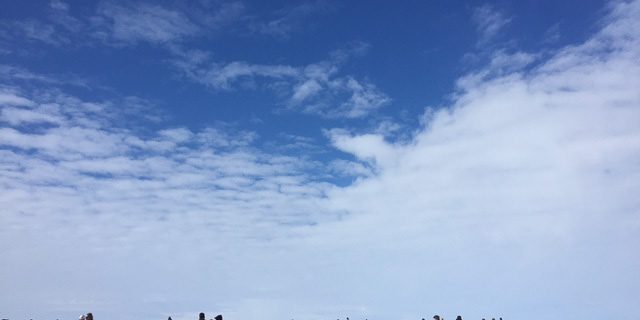Dog teams are well over halfway through this year’s Kobuk 440 as they head for the second to last checkpoint along the trail. A pack of fast teams has pulled ahead, but there are still a number of mushers running in the middle of the pack who are trying to decide whether they make a push to catch up or hang back and enjoy the spring weather.
When Joar Leifseth Ulsom pulled into Ambler on his first pass through the northwest Arctic village, even he was surprised he wasn’t farther ahead. He stated, “I’m a little bit behind these guys, and I needed to have a good run coming over here for me to stay with those guys, but I had to bag a really heavy dog for about four hours, and I just had a really slow run coming over here.”
Ulsom has been a formidable force in long-distance sled dog racing for at least the last four years, but he said a soft trail wreaked havoc on his dog team early on. “That’s how it goes,” he said. “[Sore] wrists, and then they start compensating, so it goes into shoulders.”
But in the wee hours of Saturday morning, his spirits were up. His team had a solid run out to Kobuk and back. He wasn’t ready to divulge his strategy, but as he stuffed bacon into his mouth, he grinned slyly and hinted that he was ready to let up on the break as his team makes their way to Kiana. “Ten hours of running in the heat of the day… I’m not going to push them, they’re just going to get to go in their own speed.” Thinking more about the race ahead, Ulsom says, “they’re going to do their own thing, so we’ll see.”
Conservative race plans aren’t anything unique. Damon Tedford says he’s trying to run a strategy that will give his dog team the experience they need to run races that are twice as long, but he’s not opposed to racing, either. Tedford states, “We still have to go ahead with our plan. The goal is to keep our speed up; these dogs are running a certain way, and it’s hard to keep up with these mid-distance guys that are a little bit faster.” Thinking a little bit more about the state of his dog team and their performance, Tedford states, “we still got a bit of speed, I mean we worked pretty hard on the first two runs, so it’s nice to still have 11 good pulling dogs, so that makes a difference.”
The Canadian emergency room doctor says he’s thrilled to get to mush dogs in a part of he world few ever get to visit. “It kind of reminds me of this place where I used to live in Saskatchewan. You look off in the distance and see where you’re going to be in six hours, I think that’s probably the coolest thing about it. You stare at it for six hours, and it doesn’t seem to get any closer.” But Tedford admits, “if you’re not in a good spot, it could be very draining, for sure.” But most of the mushers are enjoying well over 15 hours of daylight and spring weather.
The unique and remote nature of the Kobuk 440 isn’t lost on Jon Vanderwal either, but the rookie musher says he’s mainly focused on simply moving down the trail behind his dog team. As far as racing, Vanderwal is not so sure: “I’m just trying to get back to the finish line I guess — or back to Kotzebue, not that it’s going so terribly that I couldn’t, but just trying to get them there the best way I know how, I guess.”
With two more checkpoints and another warm afternoon ahead, there’s still plenty of opportunity to race. Mushers are starting to show signs of fatigue, which makes keeping track of rest time challenging. They’ll need to make sure they’ve added up their required 20 hours of accumulated rest correctly before they get too close to the finish line.
https://www.instagram.com/p/BD-5Y66QanY/
https://www.instagram.com/p/BD-6CItQapQ/
https://www.instagram.com/p/BD-5cEuwanj/
https://www.instagram.com/p/BD-6SBOwap_/




